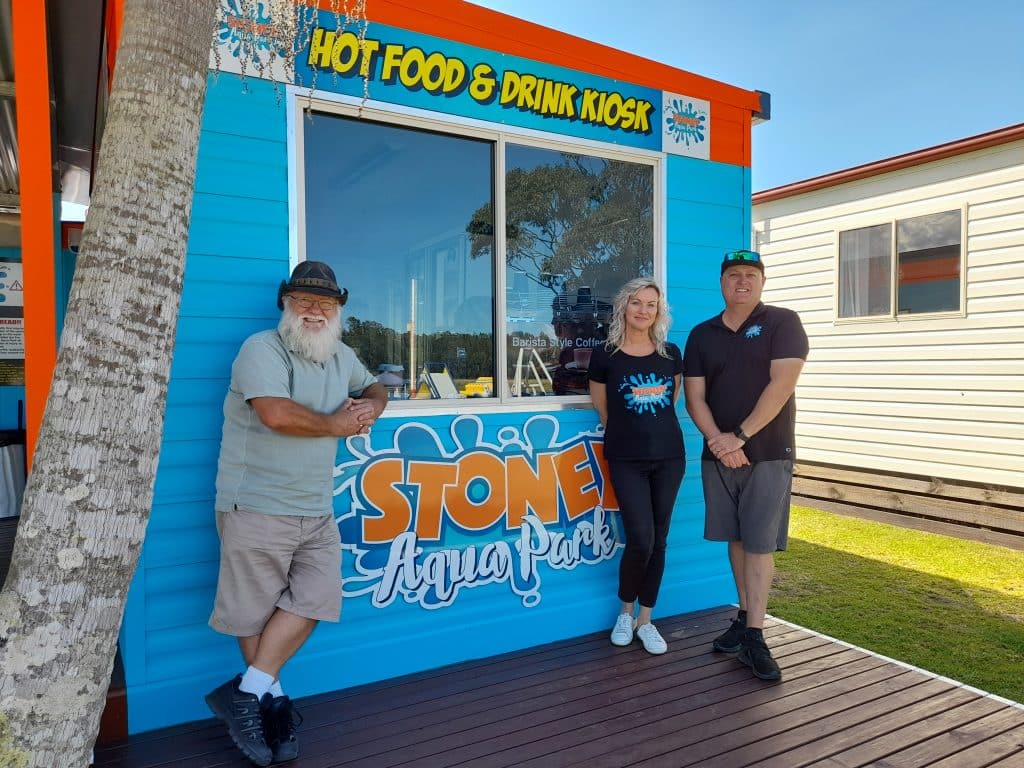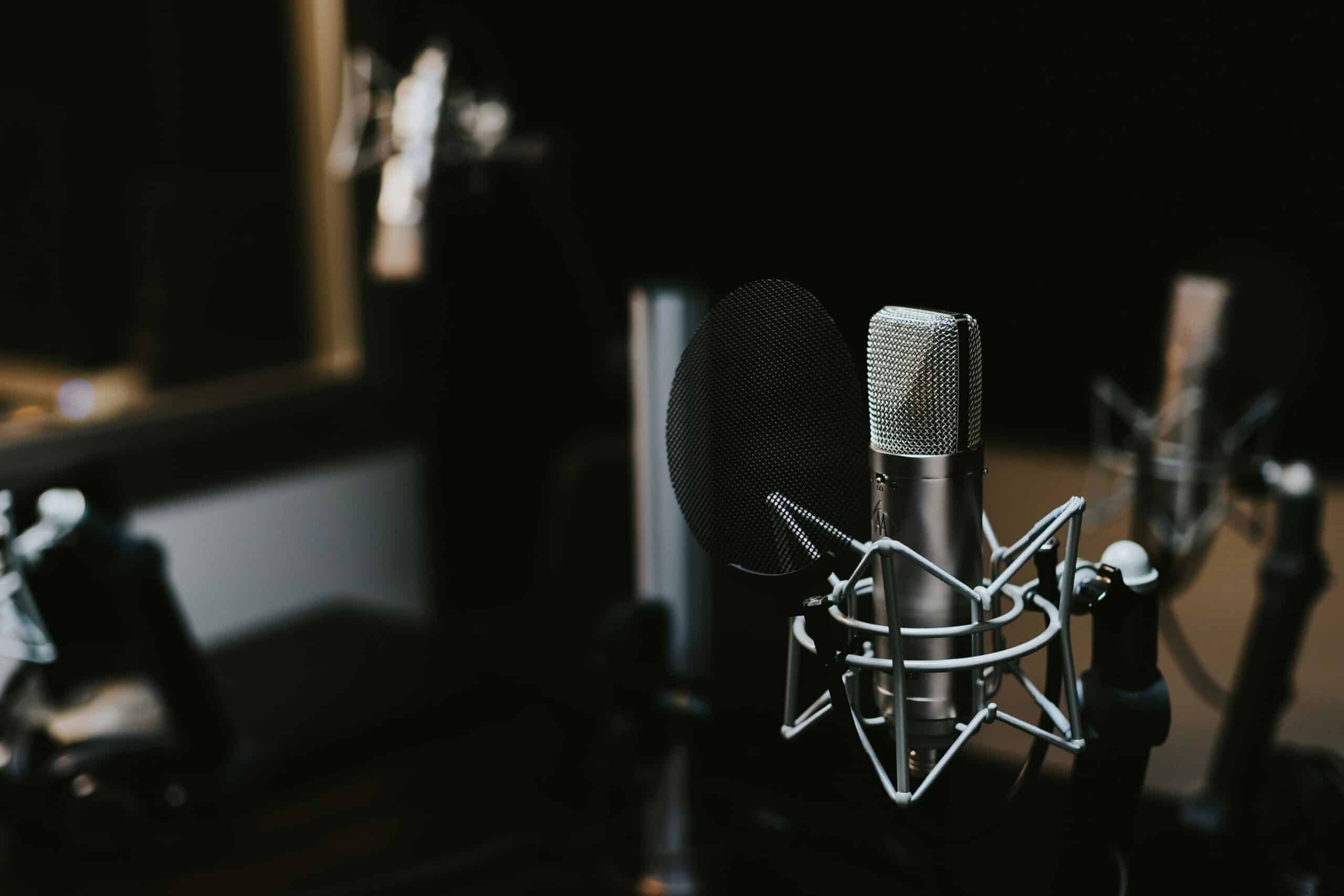Well its school holidays again and what a better way to think of something to do with the kids is a visit to the Stoney Aqua Park, on the Mid North Coast of NSW. Just a short 15 minutes drive from Port Macquarie.
The Aqua Park is based on a man made lake sourced from a fresh rain water catchment. This allows Stoney Aqua Park to maintain a safe and controlled environment. No sharks, guaranteed!!
Slides, blast bags, trampolines, swings, challenge tracks, balance beams, wobble pads and chill out areas are just a few of the many and varied features enclosed within the extensive walkways and floating tracks of the course.
On shore they have extensive shade structures, BBQ areas that require $1 coins to operate, change rooms, picnic benches and sun loungers. A kiosk is provided for your convenience and comfort under the natural shaded environment and white sandy lake front.
Stoney Aqua Park will welcome you for the day or just for a few hours. If you have a party, breakup or celebration of any sort we offer a great option for groups large or small.
Not only is it a water park but it also has caravan sites and camping as well as cabins available, amenities block and kiosk, so the parents can sit back and enjoy while the kids jump on all the water activities.
Coming soon there will also be a land based action park. There is a water ski park, but make contact with Stoneys as its currently closed.
They are located at 16 Hacks Ferry Road, Telegraph Point, NSW 2441 along with Stoney Park Ski School.
On the Mid North Coast of New South Wales. Australia.
Telephone: +612 6585 0090
Email: info@stoneyaquapark.com.au or visit their website https://www.stoneypark.com.au/

We are back at the Trangie Truck and Tractor Festival talking with Jason Stanley who is a driver and also a mechanic for Inland Petroleum. He talks us through the truck’s 90 tonne worth of weight and he says its like driving a car. There are about 4 in the fleet, he takes Phill through some of the driving tips for the truck.
Jason takes the truck out every couple of weeks when they need an extra driver. The rig is 30 metres long and weighs 90 tonne. Jason talks through some of the experiences he has encountered while driving with vanners on the roads and some tips that affect truckies
Next on the show Phill catches up again with Jeff DeAth from Check Weight as they talk through another tip for the caravanners out there.
The subject this week is “Ball Weight at Tare”.
Tow ball weight, also referred to as Tow Ball Mass (TBM) is the weight applied from your caravan to the tow ball on your vehicle (whilst hitched).
But do you really understand how it works, how to measure it and what your tow ball weight should be ?
Having an idea what your tow ball weight is can make for safer travel and reduce the chance of caravan sway and an accident.
This is especially the case if you are running near the edge of your 4WD’s towing capacity. Also being aware that every trip you make, your caravan weight changes – and therefore potentially your tow ball weight changes to.
Yes – Tow Ball Mass is not a constant –
it changes every time you put something in – or take something out of a caravan.
When we at Check Weight weigh a caravan, owners are blown away that the tow ball weight can change 1-2 kg when we open the door of the caravan.
When you are towing, the majority of the caravan weight is taken by its wheels, and a small portion (usually 10%) of it is passed onto the tow vehicle via the tow ball.
A trailer that is heavy behind the axles will have a low tow ball weight, and if it’s heavy at the front (like a lot of hybrids and camper trailers) then it will have a heavy tow ball weight.
Why does it matter?
There are lots of reasons why TBM matters, but it can simply mean the difference between a stable caravan and a swaying caravan.

Caravan Stability
If TBM is too light, you will end up with terrible sway issues. The lower the TBM, the more potential there is for the caravan to sway and become unstable. And the lower the road speed at which a rig may attempt to change ends – i.e. to jack-knife,)
In general, the heavier the tow ball weight the more stable it will be (to a point!), but a heavy tow ball weight isn’t good for other reasons, so you need to find the right balance.
A too heavy tow ball mass may result in the caravan pushing the rear of the vehicle and also as the tow ball weight transfers weight to the vehicle it may mean that the vehicle exceeds its Gross Vehicle Mass GVM and its rear Gross Axle Weight Rating (GAWR)
The right tow ball weight doesn’t guarantee caravan stability – it’s only one of many factors.
Significant extra stress on the vehicle
Tow ball weight applies a huge amount of stress to a 4WD. Next time you walk past your vehicle, have a look at how much distance there is from the centre of your rear differential to the tow ball. For dual cab Utes, it can be around 1200 – 1600 mm, and this creates significant leverage.
At Check Weight we often see the extra weight applied to the rear axle 50% higher than the tow ball weight. To clarify, that means if you are applying 200 kg to the tow ball, it can be adding around 300 kg to the rear axle!
Or if 350 kg to the tow ball, it can be adding around 525 kg to the rear axle!
For more on Axle Weights go to https://www.checkweight.com.au/post/check-weight-mobile-caravan-weighing-importance-of-maximum-axle-weight-loads
Be wary when people tell you all kinds of fancy ways to work out your tow ball mass.
There’s a whole range of fanciful ideas – but make sure you are getting an accurate TBM.
Knowing your TBM is important – so get an accurate measurement.
Here’s a few ways that will give you an idea of your TBM.
These tow ball scales (pictured)

are popular and cheap. However they are not always particularly accurate.
However they can be a good guide as you change weights when loading / unloading your caravan.
Pluses
· Easy to use
· Cheap
· Portable
Minuses
· Most only weigh in 10 kg increments
· Not calibrated
· Not overly accurate – Check Weight has seen some of these weighers be accurate or out by as much as 10-20 or 30 kgs. That could be 10% error!
Goingoveraweighbridge
Another way recommended is to go over a weigh bridge. Remember a public weighbridge has been designed to weigh trucks – not to weigh caravans. A Public Weighbridge has its limitations – one of which you could have a truck waiting behind you to get weighed! https://www.checkweight.com.au/post/five-reason-to-weigh-your-caravan-with-check-weight-instead-of-using-a-weighbridge

The theory – Weigh your vehicle hooked up to the caravan, say it weighs 2820 kgs
Then unhook the caravan and weigh the vehicle again – now it weighs 2600 kg – so your tow ball weight is 220 kgs – Right ? – Sorry wrong!
Most public weighbridges weigh in 20 kg increments (sometimes even more) – so there is a potential plus or minus of 9.9 kgs
If you weigh 211kg it would read 220 kg – if you weigh 229 kg it would still read 220 kgs. Therefore on a 220 kg reading there is the potential for a variation of 18 kg (plus or minus 9kg) Doesn’t matter for a vehicle or caravan that weighs 2-3 tonne – but matters for a tow ball that weighs 220 kg!
So again a public weighbridge is good for a guide – but not 100% accurate.
Check Weight’s Tow Ball weigher is accurate to 0.5 kg – and is calibrated every 12 months!

To see what can make your caravan unbalanced or overweight read our blog article https://www.checkweight.com.au/post/check-weight-five-things-that-will-make-your-caravan-overweight-or-unbalanced
To get your caravan weighed
